In a simple Atwood machine, two unequal masses and are connected by a string going over a clamped light smooth pulley. In a typical arrangement as shown in the figure, and . The system released from rest and then the larger mass is stopped for a moment after the system is set into motion. Find the time elapsed before the string is tight again.
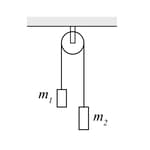


Important Questions on Newton's Laws of Motion
The figure shows a uniform rod of length having a mass of . The strings shown in the figure are pulled by constant forces of and . Find the force exerted by the part of the rod on the part. All the surfaces are smooth and the strings and the pulleys are light.

Consider the situation shown in figure given below. All the surfaces are frictionless and the string and the pulley are light. Find the magnitude of the acceleration of the two blocks.

A constant force is applied to the block of mass as shown in the figure given below. The string and the pulley are light and the surface of the table is smooth. Find the acceleration of .
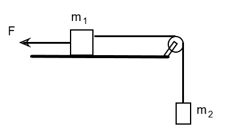
In the figure given below, and Find the acceleration of either block. Describe the motion of if the string breaks, but continues to act.
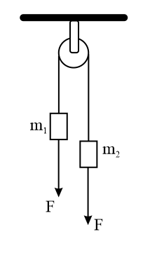
Let and in the figure given below. Find the accelerations of and The string from the upper pulley to is when the system is released from rest. How long will it take before strikes the pulley?
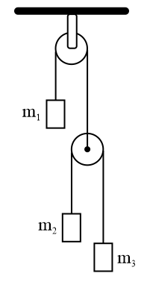
In the given figure below, suppose and What should be the mass so that it remains at rest?
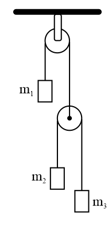
Calculate the tension in the string shown in figure given below. The pulley and the string are light and all surfaces are frictionless. Take
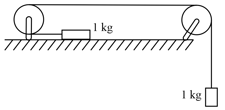
Consider the situation shown in figure given below. Both the pulleys and the string are light and all the surfaces are frictionless.
(a) Find the acceleration of the mass .
(b) Find the tension in the string.
(c) Calculate the force exerted by the clamp on the pulley in the figure.

